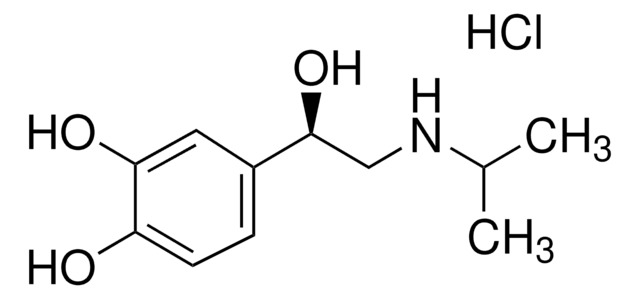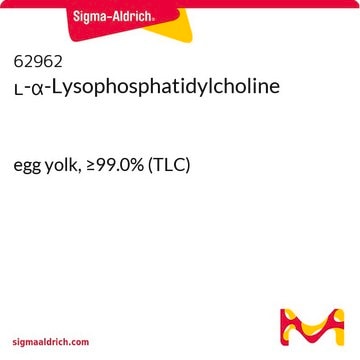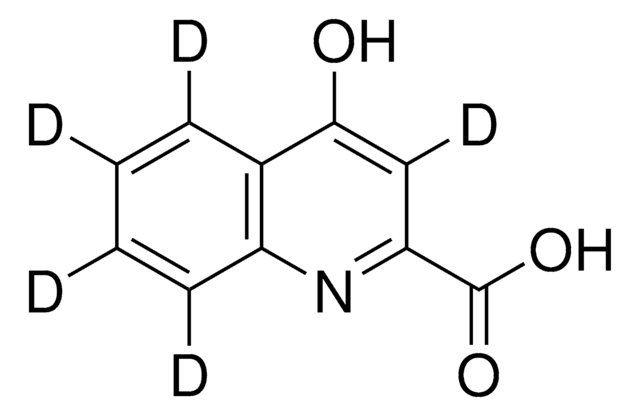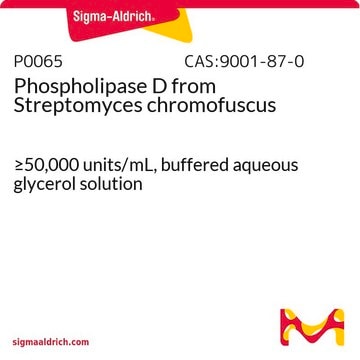L1381
L-α-Lysophosphatidylcholine from bovine brain
≥99%, Type V
Sinonimo/i:
1-Acyl-sn-glycero-3-phosphocholine, L-α-Lysolecithin
About This Item
Prodotti consigliati
Descrizione
zwitterionic
Tipo
Type V
Saggio
≥99%
Tipo di lipide
phospholipids
Temperatura di conservazione
−20°C
Descrizione generale
Applicazioni
- to determine the dose-dependent high-mobility group box 1 (HMGB1) release in macrophage and monocyte cultures by production of lysophosphatidylcholine (LPC)[3]
- for lysolecithin demyelination of mice brain tissue[4]
- for demyelination of axons[5]
Azioni biochim/fisiol
Caratteristiche e vantaggi
Altre note
Codice della classe di stoccaggio
11 - Combustible Solids
Classe di pericolosità dell'acqua (WGK)
WGK 3
Punto d’infiammabilità (°F)
Not applicable
Punto d’infiammabilità (°C)
Not applicable
Dispositivi di protezione individuale
Eyeshields, Gloves, type N95 (US)
Scegli una delle versioni più recenti:
Possiedi già questo prodotto?
I documenti relativi ai prodotti acquistati recentemente sono disponibili nell’Archivio dei documenti.
I clienti hanno visto anche
Filtri attivi
Il team dei nostri ricercatori vanta grande esperienza in tutte le aree della ricerca quali Life Science, scienza dei materiali, sintesi chimica, cromatografia, discipline analitiche, ecc..
Contatta l'Assistenza Tecnica.















